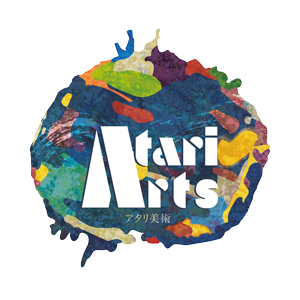Gallery
A gallery specialized in post-war Japanese artists
Founded in 2022 by Marc David Fitoussi, our merchant-gallery Atari Arts is ultra-specialized in post-war Japanese artists (mainly from 1955 to 1975). This innovative artistic enterprise was born out of a growing passion for the arts (paintings and sculptures) of the various post-war Japanese avant-gardes.
Very early on in his career, Mr. Fitoussi became interested in Japanese artists historically attached to France, such as: Akira Tanaka (where he now acts as the appointed expert of the artist’s foundation and the auction house Aguttes) or Chuta Kimura (of which his father was already a collector in the 1960s-1970s). With nearly 20 years of experience as a collector-sponsor then as an art dealer, Mr. Fitoussi frequently ventures to Japan since 2009 in search of « unseen treasures » to finally succeed in obtaining between 2015 and 2018 (in partnership with Artisyou Gallery, Paris 6th & Saint-Tropez) a mandate as an exclusive agent in Europe (including in France) with the very emblematic and renowned Whitestone Gallery (which holds several galleries in Asia – Tokyo, Hong-Kong and Taipei – and a private museum in Karuizawa) with the aim of promoting leading Japanese artists of the Gutaï and Informal movements (e.g. Kazuo Shiraga, Atsuko Tanaka, Tsuyoshi Maekawa, or Toshimitsu Imaï).
Our gallery has therefore given itself the mission to promote this post-war Japanese art, too often overlooked despite its indisputable historical importance. To do so, Mr. Fitoussi usually receives visitors privately in Paris (16th) but also tends to organize exhibition projects every year with partnering galleries and/or in French and international art fairs.
The driving spirit of our enterprise, by even wanting to bear the name, lies behind the word « Atari » which means « bluff » in Japanese. Indeed, around the year 1955, the leader and founder of Gutaï – Jiro Yoshihara – frequently spoke with the artist and co-founder of the movement – Shozo Shimamoto – about a « bluffing art ». The idea was in fact to allow future Gutaï artists to think outside the self-imposed artistic frame: « The Atari spirit allows in fact a person to appear more capable or more powerful than he or she really is ». The ultimate result for Gutaï was to generate a singularly innovative and revolutionary art. For Atari Arts, it will be a more modest attempt to promote a « bluffing historical art » likely to take your breath away with its strength and originality.
